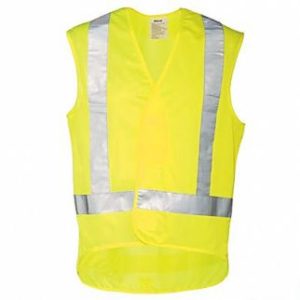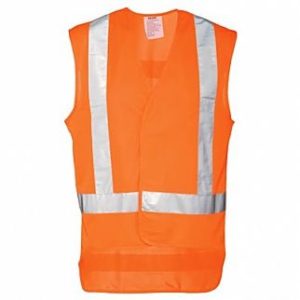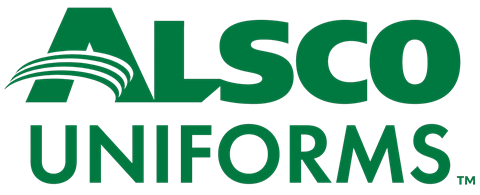When it comes to external work environments, orange is the most commonly used colour for hi-vis clothing (followed by yellow).
Why? There are two big reasons:
- Orange offers the best visibility against almost any background – especially natural greens or industrial greys and whites. While yellow is also very effective, it doesn’t work that well in the indoor environment and against white and grey walls.
- Orange is the closest to red and red means “stop”, “danger” and “caution” in context of safety and warnings. Humans inherently perceive red as a sign of danger.
The reasons for this are both cultural and possibly evolutionary. But why not red then? Red is also effective, but the prevalence of colour-blindness (particularly in males who make up the majority of most outside workforces) makes red impractical as it is indistinguishable from green to those people affected by this common condition.
These two reasons explain some of the reasons why hi vis standards in NZ require for all hi vis clothing to be orange and/or yellow. However, colour is not the only thing that makes hi vis clothing work. Let’s find out more.
How Do Hi Vis Vests and Jackets Work?
Hi vis vests and jackets utilise the fluorescent and reflective properties of different fabrics so that the wearer is more prominent against their surrounding while performing their job.



In other words, hi visibility clothing achieves its goal through conspicuity. In order to be conspicuous, every hi vis item needs to be easily detected and recognised.
To make the hi vis clothing easily detected, it is necessary to choose the right colours and to ensure contrast against the background.
Contrast is achieved by fluorescent and reflective fabrics on hi-visibility clothing. Therefore, there are two types of hi-vis clothing, based on the way in which they achieve increased visibility:
- Fluorescent hi-vis clothing is not fluorescent on its own, but it is dyed to achieve that effect. The hi visibility effect is achieved by the special dye “soaking in” the light of a certain wavelength and emitting it. Obviously, for this to happen, there has to be enough light, so this type of hi vis clothing will not do much good when the sun is down. Also, the UV lights do not have the appropriate wavelength, so the fluorescent hi vis clothing isn’t working well in those conditions, either.
- Reflective hi visibility clothing usually includes a hi vis vest or overalls that have reflective tapes on it. There is no hi vis clothing that is entirely made out of reflective fabric. This type of clothing reflects the light that is pointed directly to it. That is when it is the most useful and that is why the reflective tape is used on hi vis vests for traffic workers and those workers that work at night. The headlights of a car will throw the light ahead of the vehicle and if there is a person in front of the vehicle, the driver will see them due to the reflective hi vis tape for clothing.
Contrast is very important to achieve high visibility. Fluorescent and reflective materials will help to achieve it, but the choice of colours also plays an important role. To ensure better detection, it is necessary to use colours that are the most easily seen.
However, besides improved detection, colours are also essential to ensuring better recognition. Let’s explain how colours make us detect items more easily and recognise them in certain contexts.
Which Colour Is Most Easily Seen?
The answer to this question depends on the period within a day, but also on the context in which the colour is seen. For example, during daytime and from a distance, yellow-green is the most visible colour.
However, after dark, we are more likely to spot blue-green shades. On the other hand, you are more likely to spot red or orange against the green environment outside. How does this even happen?
This is all due to the fact that we perceive colour as waves. There are three types of the wavelength that colour travels in: short, medium and long. This classification is a bit loose, but it can explain the general principle behind using certain colours for hi vis clothing.
Another element that determines the visibility of a certain colour in a given moment is the amount of light. That is due to the biological features of our eyes that are designed to use light to perceive colour.
Namely, our eyes use the system of cones and rods to see. While cones are used to sense wavelengths, the rods are there to ensure vision when there is not much light in the surroundings. Both cones and rods are photoreceptors.
If a colour is most easily seen it ensures easy detection. That is the first factor, out of two, that needs to be fulfilled to ensure the effectiveness of hi vis clothing. The second one is recognition.
How Does Colour Contribute to Easy Recognition?
It is obvious that different colours have different meanings for us. Some people will say blue colour soothes them, while others will tell you that yellow stimulates them to work. This happens due to some evolutive principles, but also due to some cultural factors.
For example, humans will very likely spot red colour because that is the colour of edible berries that our ancestors used to eat. In time, the ability to spot red against green got imprinted into the collective memory of the human race. This is an example of how evolution dictates some of our responses to colours.
Is that it? We like red because it was once important to pick berries? It’s not as easy as that. In time, we, as humans, created different cultures that associate different meanings to different colours.
For example, red is the colour of love, energy, passion in Western cultures. In certain parts of Asia, it is considered to be the colour of good luck and fertility, while some African cultures consider it the colour of death. Therefore, culture and society often make us associate colours with different meanings.
That is why it is important to observe colours in different contexts. While on the road or in a warehouse with heavy machinery or even on a construction site, you will know that you should look out when you see red or orange. Also, when looking for a person who works on such a site, you will look for that bright-yellow vest.
In other words, we recognise orange and yellow in the context of such workplaces and situations as colours or warning. That is precisely how hi visibility clothing works in terms of colours. By adding some fluorescent dye to them, yellow and orange are made even more visible.
However, that is not enough when the sun comes down. That is why hi vis clothing also uses fluorescent colours, and/or hi vis tape for clothing to stand out even more. Fluorescent fabric is obvious, but the reflective tape is still a bit of a mystery. Let’s shed some light on it.
How Is Reflective Fabric Made?
The reflective tape can be micro-prismatic and glass bead reflective hi vis tape for clothing. We know that the fluorescent effect on the hi vi clothing is achieved by simple dying of the fabric. On the other hand, the hi vis tape for clothing works in an entirely different way. It is all about tiny prisms and beads. Here are the two most commonly used types of reflective tape:
- Micro-Prismatic Tape is plastic vinyl in its base. The plastic vinyl is formed into tiny micro-prisms. They are sealed in the tape. The prisms may be small, but they still reflect the light. Moreover, there is a lot of them and they reflect the light back to the source. The micro-prismatic tape is durable and long-lasting. It comes in different colours and shapes, but the downside is that it is quite expensive.
- Glass Bead Reflective Tape is what you see on most hi visibility clothing. Safety hi vis clothing usually has this type of silvery-grayish tape on it. This type of reflective tape is much cheaper than the micro-prismatic one and it still gets the job done. You just need to make sure you maintain it properly.
If you rent your hi visibility clothing from Alsco NZ, you won’t have to worry about the maintenance, at all. For all our customers, we collect the dirty garments on a regular basis and replace them with the clean ones. We take the garments to our facilities where it is being laundered with great care and using industrial level cleaning agents.
This regular laundering, pickup and delivery are all included in the monthly price of your hi vis clothing. Contact Alsco New Zealand today and learn what is the best offer for your flat monthly rate.
Photo courtesy of Creative Commons






